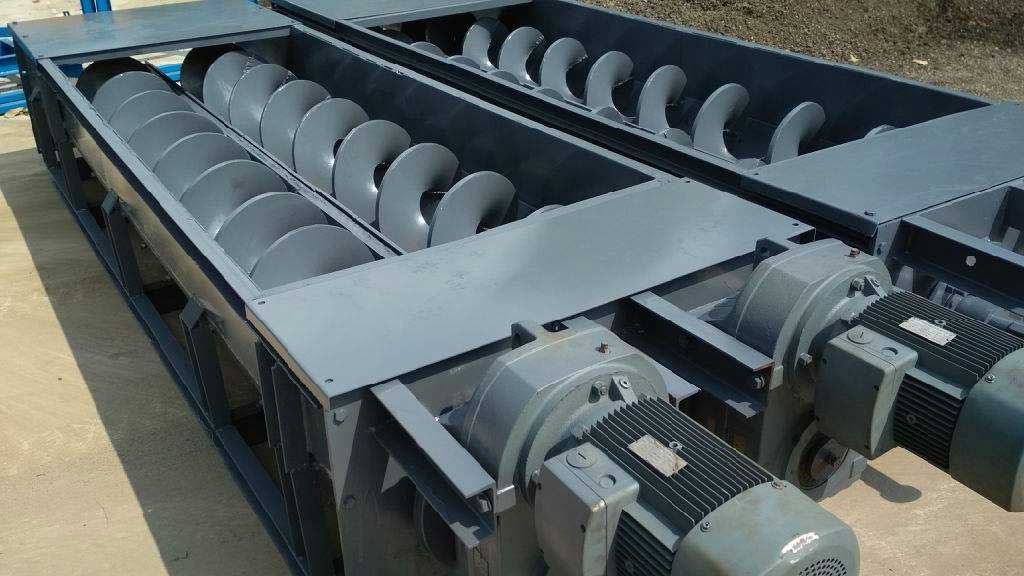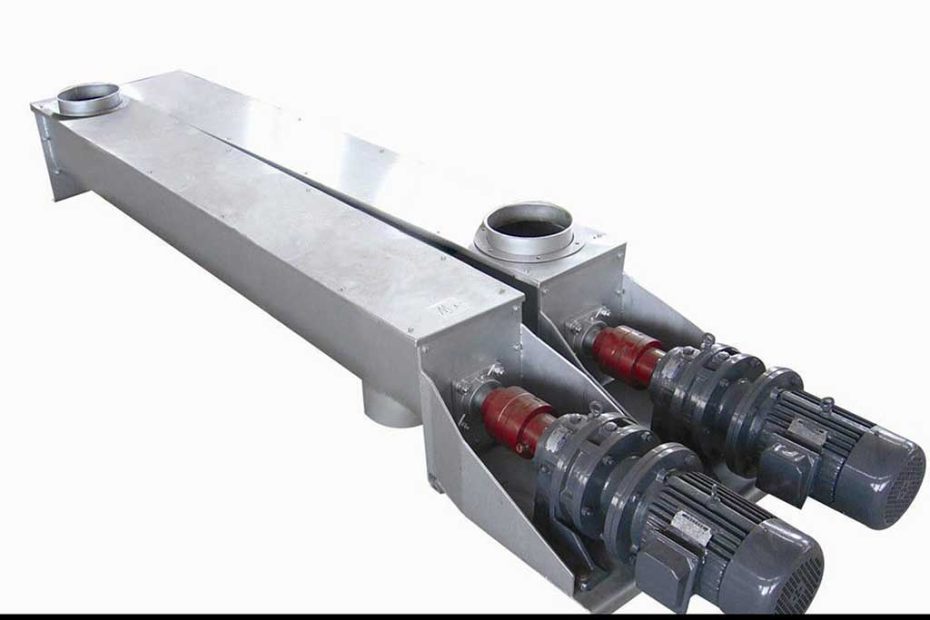The screw conveyor, commonly known as the auger, is a continuous Vibrating Conveyor used for short-distance horizontal or vertical conveying of bulk materials.
Horizontal screw conveyor is a kind of vibrating conveying equipment that uses the motor to drive the screw to rotate and push the material to achieve the purpose of conveying. It has a stirring and mixing effect on the material and can usually convey powdery materials, granular materials or Sheet material, conveying material from one place to another.
However, the screw conveyor is not suitable for conveying bulky, fibrous impurities, highly abrasive, easily broken or easily bonded materials, so as not to cause blockage and material breakage.
Analysis of the five major structural components of the horizontal screw conveyor
The structural components of the horizontal screw conveyor are mainly composed of a screw body, a bearing, a trough, an inlet and an outlet, and a driving device. The rigid spiral body is supported on the trough by the bearings at the head, tail and middle part, forming a rotating member that can realize material transportation. side and underside of the head.
Spirochetes
The screw body is the core component of the horizontal screw conveyor. It consists of two parts: the screw blade and the screw shaft. It is the main component to realize material transportation.
The helix usually consists of one or more helical shafts on which helical blades are mounted. The helical blade is a helical space surface, which is formed by a straight line rotating around the axis and moving in a straight line at the same time.
Commonly used blades are full-face type (solid type) and belt type; according to the coiling direction of the blade on the shaft, it is divided into two types: right-handed and left-handed (counterclockwise coiled for left-handed, clockwise coiled for right-handed). The direction of material conveyed by the spiral body is determined by the rotation direction of the blade and the rotation direction of the shaft.
When confirming, first determine the rotation direction of the blade, and then follow the principle of left-hand rotation for left-hand rotation and left-hand rotation for right-hand rotation. The rotating blades can realize the conveying of materials in two different directions at the same time. The screw shaft usually adopts a hollow steel pipe with a diameter of 30-70 mm.
Their quantity and arrangement determine the conveying capacity and conveying effect of the screw conveyor.

Bearing
The bearing is an important part supporting the screw shaft, it can withstand axial and radial force, and ensure the smooth rotation of the screw shaft. Generally speaking, the selection of bearings should take into account factors such as the load and speed of the conveyor.
The bearing is a component installed in the machine groove to support the spiral body. According to its installation position and function, there are head bearings, tail bearings and intermediate bearings.
The head bearing is mainly composed of centripetal thrust bearing, bearing seat, bearing cover, oil ring and other parts. It is installed at the discharge end of the head and bears radial force and axial force, so the bearing should adopt centripetal thrust bearing; The tail bearing is installed at the feed end of the tail, and only bears the radial force. The radial spherical bearing is used, and the structure is relatively simple; for the screw conveyor with a screw shaft longer than 3 m, in order to avoid bending of the screw shaft, an intermediate bearing should be installed. Generally, a suspension structure is adopted, and its transverse dimension should be as small as possible to avoid material clogging.
Feed trough
The trough of the horizontal slow screw conveyor is usually made of thin steel plate with a thickness of 2 to 4 mm. The two side walls of the cross-section are vertical, and the bottom is semicircular. The end of each section of the trough and the upper end of the side wall are reinforced with angle steel to ensure the rigidity of the trough and realize the joint between the nodes and the top cover plate and the trough. For connection, the bottom of the trough should be provided with supporting feet for cast iron parts or angle steel welded parts.
The inner diameter of the bottom semicircle should be 4~8 mm larger than the diameter of the helical blade. The cross-section of the trough of the vertical fast screw conveyor is circular, and it is usually made of thin-walled seamless steel pipe.
Inlet and outlet
The feed port and the discharge port are respectively the feed and discharge positions of the horizontal slow-speed screw conveyor. The inlet and outlet of the horizontal screw conveyor are usually open to facilitate the entry and exit of materials. The inlet and outlet are usually equipped with baffles or gates to control the amount of material in and out.
In addition, multiple feed ports and discharge ports can also be set according to actual needs to meet the needs of multi-point feeding or multi-point discharging.
drive unit
The driving device is the power source of the horizontal screw conveyor, which is composed of motor, reducer, sprocket, pulley and other parts. The motor is connected to the reducer through a pulley or a gear, so that the reducer drives the sprocket or pulley to rotate, and then drives the screw shaft to rotate to realize the conveying of materials.
In conclusion
It can be seen that when the screw conveyor conveys the material, it uses the linear motion accompanied by the fixed screw rotation to push the material forward.
The material moves forward in a spiral shape, that is, it is accompanied by a rolling motion in the circumferential direction while being conveyed forward.
Therefore, the speed of the horizontal slow screw conveyor should not be too high; while the vertical fast screw conveyor must use the high-speed rotation of the screw body to form sufficient friction between the material and the trough to overcome the friction resistance of the blades on the material and the friction of the material itself. Gravity, to ensure that the material is conveyed upwards.
